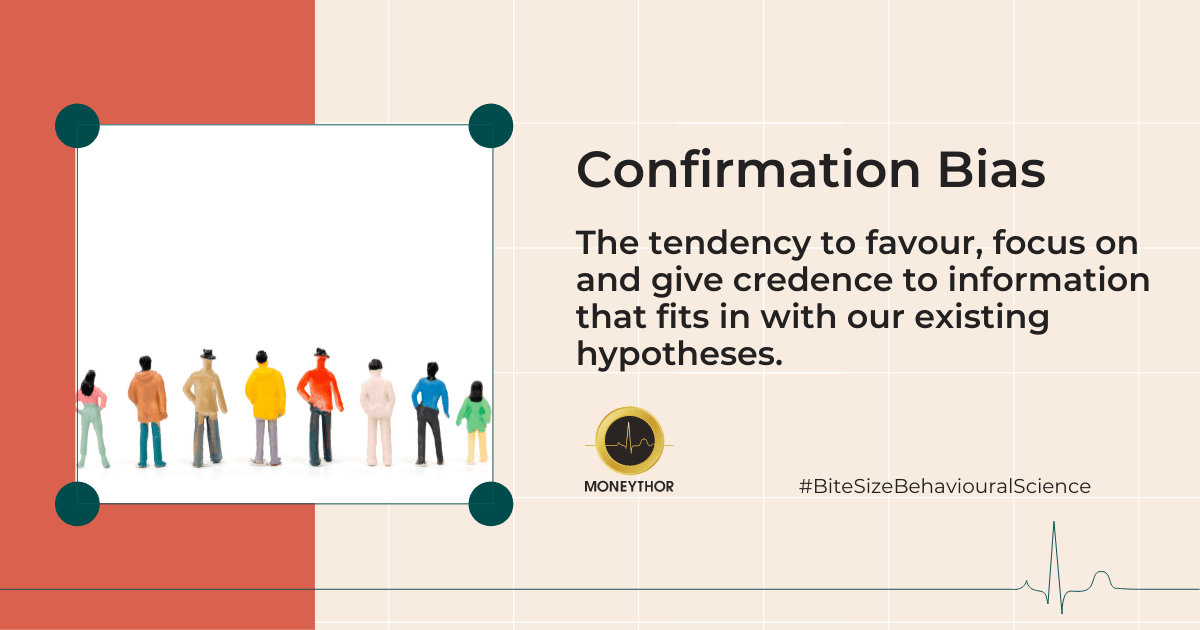As rational human beings, we would like to believe that our opinions and viewpoints are unbiased, objective and coherent based on our lived experiences. We assure ourselves we are able to manage our perceptions and that we are able engage intentionally and carefully with the information we receive. However, this process is made more difficult by the volume of data we receive and the rate at which it must be processed. Unknowingly, we take cognitive shortcuts to manage this data flow, which can have significant influences on the conclusions we draw and the way we engage with certain information.
What is confirmation bias?
Confirmation bias describes the tendency to favour, focus on and give credence to information that fits in with our existing hypotheses. We are often attentive and attuned towards information that upholds our beliefs, while perhaps also unconsciously undervaluing information that disproves and challenges them.
For example, the way a question is phrased and asked can often result in responses that are consistent with a hypothesis or viewpoint. If you were to Google “Is Pepsi better than Coca-Cola?,” the responses will surface sites that lists why Pepsi is better. However, if the question was reversed, the query will surface sites that provides reasoning for why Coca-Cola is superior. In this case, the use of affirmative language results in collecting evidence which backs up your original hypothesis – from a source which most likely supports your original hypothesis.
Confirmation bias is often displayed during the process of discovery or when information is recalled selectively causing it to be interpreted in a one sided manner. Time and again, studies have shown how people choose to focus on responses that supported their own hypotheses and remain resistant to conflicting evidence. Often this can result in positive feedback cycles; after having our positions challenged we tend to feel an even greater commitment to our original beliefs!
How can banks and financial institutions help customers navigate and avoid confirmation bias?
Personal Financial Management (PFM) solutions
Providing customers with interactive PFM tools like foresights to display what upcoming expenses they are expecting for the month is a great way to encourage them to understand what they are purchasing on a regular basis and prompt them to make more intentional financial decisions. PFM tools can also help by sending prompts to customers to help them recognise their proclivity towards expenses that might be encouraged or informed by their confirmation bias, thus giving them time to stop and reconsider the way the react to the circumstances.
Gamification of digital banking services
The gamification of digital banking services can be a fun way to introduce information to users, enabling them to have a deeper understanding of their finances. Embedded quizzes, surveys or questionnaires can help deliver information in a positive manner, framing information in such a way that encourages users to deliberate their decision making process. This way, the information served acts as a nudge rather than a direction, thus allowing decisions to be challenged in a gamified manner.
Financial wellbeing programmes
We know that our cognitive biases can distract us from making sound financial decisions. Therefore, giving users a clear overview of their finances is the first step in helping them realise and acknowledge their cognitive biases. Serving financial literacy content directly to users is the next step as it provides users with valuable insights and information that they might not have access to elsewhere. Beyond that, long term financial wellbeing programmes can be impactful by consistently analysing a user’s financial overview with the goal of offering them a better idea of the longer term impacts of their financial decisions.
Conclusion
As consumers, the first step to reducing the impact of confirmation bias is to recognise it and understand the types of decisions it is most likely to impact. When making financial transactions, is important to acknowledge the impact confirmation bias has on our ability to evaluate information and the decisions it can influence. Remember – decisions are not fully considered if we are only relying on information that already supports our assumptions. Financial services can help consumers understand their confirmation bias by drawing attention to past biased decisions in the aim of empowering consumers to make better financial decisions in the long term.

